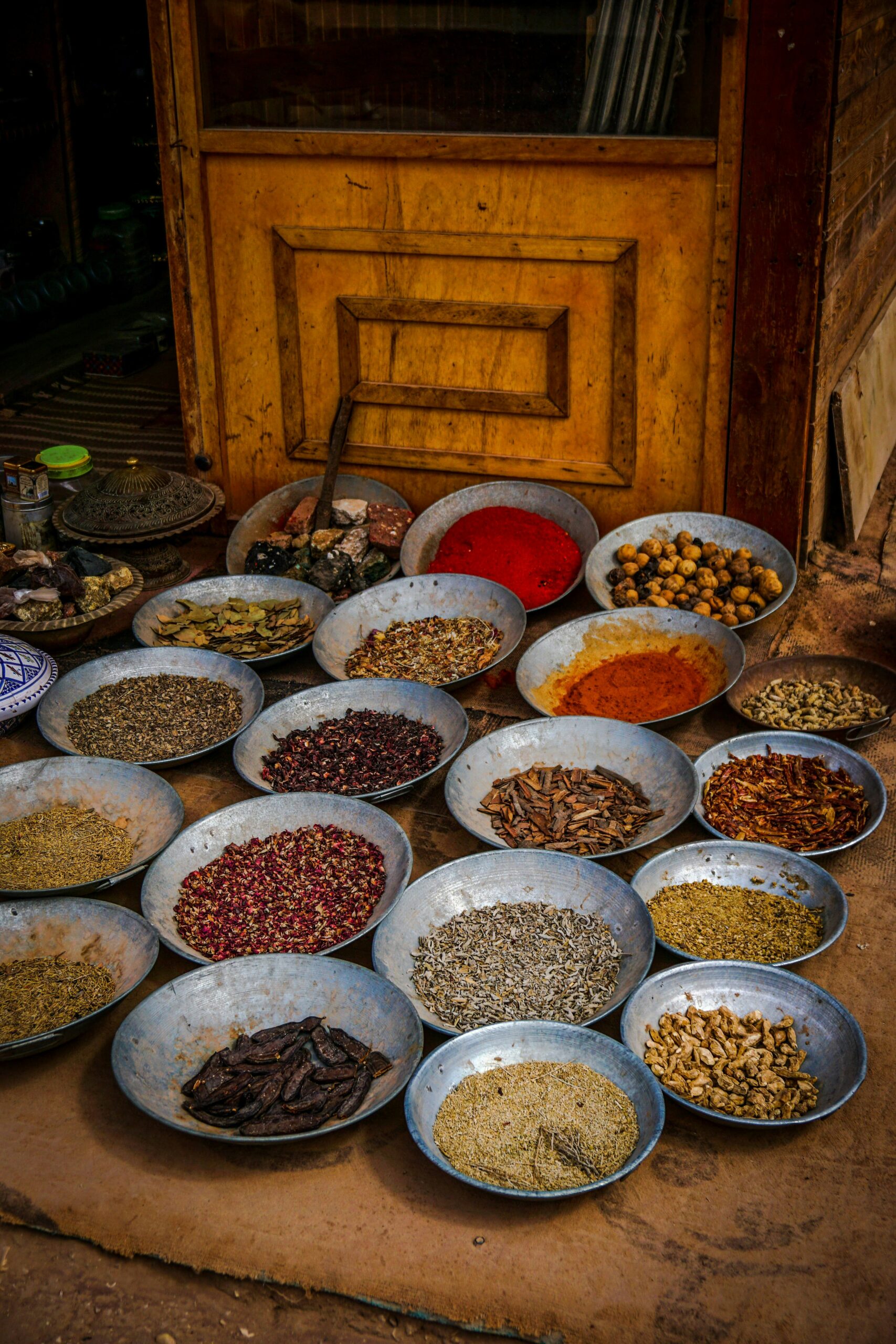
An Overview of Authentic South African Dishes
Authentic South African dishes are an integral part of the culture. South Africa boasts a diverse culinary landscape, a rich tapestry woven from the country’s varied cultural heritage. Each of South Africa’s numerous tribes has unique traditional dishes that reflect their history, customs, and geographical influences. As one explores these authentic South African dishes and it becomes evident that traditional foods serve as more than mere sustenance. The dishes express identity and culture.
Bobotie
One of the most iconic authentic dishes in South African cuisine is Bobotie. Influenced by Malay and Cape Dutch cultures. Which consists of spiced minced meat topped with an egg and milk mixture. Served with yellow rice and chutney. Showcasing the unique combination of spices and flavors typical of South African cooking.
Similarly, braai, refers to barbecue. Braai is not just a cooking method but an essential social ritual. In South Africa, braai brings families and friends together to enjoy grilled meats. In particularly boerewors, a spiced sausage unique to the region. Some people add salads to their braai and other add “rooster brood”. In English, it t is toasted bread, but it is not the usually toast bread. It is home made bread. A picture of the ” rooster brood” is below.

Pap
In addition to meat dishes, an array of starches plays a vital role in South African traditional foods. Staple items like pap, a porridge made from maize, and bread. Among the Xhosa and Zulu tribes, are often served alongside stews and vegetables. Local ingredients such as maize, beans, and seasonal vegetables form the backbone of many dishes, reflecting the region’s agricultural practices. Travelers can experience the taste of “pap” at the local KFC fast food restaurants. ” Tasting ‘pap” certainly enhances the travel experience in South Africa.

Notably, various regions also add their distinctive flavors to traditional foods. The coastal areas embrace seafood, while the mountainous regions offer game meat and hearty stews. As one immerses in South Africa’s culinary traditions. It becomes clear that food is deeply intertwined with cultural narratives, storytelling, and communal gatherings. Highlighting the nation’s rich heritage through its unique and varied dishes.

Diversity of Tribes and Their Culinary Influences
South Africa boasts a tapestry of cultures, and its culinary landscape reflects this rich diversity through the distinct traditional foods of various tribes. Prominent tribes include the Zulu, Xhosa, Sotho, and Tswana, each with unique practices and ingredients that define their traditional dishes. The Zulu community, the largest ethnic group in South Africa, is known for traditional dishes like ukotini (a fermented maize dish) and umngqusho (samp and beans). These meals often grace significant celebrations and are deeply rooted in Zulu customs.
Xhosa tribe
In contrast, the Xhosa people have a distinctive culinary identity characterized by dishes such as isijingi. Which is made from pumpkin and mealie meal, and umphokoqo, a crumbly maize meal dish enjoyed with various meat stews. Their cooking often includes traditional ingredients like maize and seasonal vegetables, highlighting the importance of agriculture in their culture.
Sotho Tribe
The Sotho tribe, particularly known in the Lesotho region, features dishes that emphasize grains and legumes. A staple meal includes pota (a type of porridge made from sorghum). Often accompanied by bobotie, a spiced meat dish that reflects the tribe’s ability to adapt local and foreign influences in their culinary practices. The Tswana tribe also has unique offerings such as seswaa. It is a slow cooking meat dish, and pap, a soft maize porridge that serves as a base for many meals.
Historical movements and exchanges among these tribes have led to a fascinating fusion of flavors and techniques. Over time, the interplay of their distinct cuisines has shaped what is now recognized as traditional South African food. Reflecting both the influences of colonial history and indigenous practices. Understanding these culinary practices offers critical insight into the lives and identities of South African tribes. Underscoring the importance of food as a cultural expression.
Cost of Traditional Ingredients and Food Availability
Understanding the economic aspects of traditional South African cuisine is crucial for examining its sustainability and accessibility. Tribal dishes rely on a variety of staple ingredients, including maize, sorghum, and various vegetables, each with price points influenced by several factors. These factors include seasonality, market accessibility, and regional disparities. For instance, the price of maize, a staple in many traditional diets, can fluctuate depending on the harvest season, making it more expensive during off-peak periods. Additionally, regional disparities affect pricing; urban areas often face higher costs due to transport and distribution expenses, while rural areas, where these ingredients are frequently grown and harvested, experience lower prices.
Moreover, the availability of traditional ingredients varies significantly between urban and rural environments. In urban areas, the demand for convenience often leads to an increase in processed food consumption, which can overshadow traditional dishes that rely on fresh, locally sourced ingredients. Conversely, rural communities may have easier access to traditional crops, yet they also face challenges, such as limited access to markets and economic constraints that can hinder small-scale farming. This disparity raises important questions regarding food security, as communities striving to uphold their culinary heritage may find it increasingly difficult to maintain access to the necessary ingredients for traditional cooking.
Food security directly impacts the preservation of traditional foods, as the ongoing economic challenges can lead to a decline in community-based farming practices. As traditional ingredients become less accessible, the risk of losing distinct culinary practices increases. Additionally, the lack of availability can change consumption habits, steering individuals toward more readily accessible, processed food options. This shift not only affects the economy but also diminishes the rich tapestry of South Africa’s diverse culinary traditions.

Cooking Methods and Techniques in South African Cuisine
In traditional South African cuisine, cooking methods reflect the rich cultural heritage and diversity of the various tribes that inhabit the region. One prominent technique is the use of open fires for cooking, a practice that has been prevalent for centuries. This method not only provides a unique flavor profile to food, but it also fosters a sense of community, as families and friends gather around the fire to share stories and meals. Different tribes might have distinct ways of managing the fire, including the choice of wood and the structure of the fire itself, impacting the overall taste of their traditional dishes.
What is a “Potjie” ?
Cast iron pots, known as “potjie,” play a significant role in the cooking techniques utilized in South African cuisine. These heavy, cast-iron pots allow for slow cooking, which enhances the flavors and tenderness of various dishes. The potjie is often utilized for preparing stews and other hearty meals, where ingredients are layered and left to cook over a low flame for several hours. This method of cooking showcases how generations have embraced these techniques, as potjie has been passed down through families, evolving yet maintaining its traditional roots.
Here is a short video how a potjie is prepared for cooking with delicious meat, vegetable and spices. Cooking in a potjie
Slow cooking is a hallmark of many South African recipes, emphasizing patience and the celebration of ingredients. The significance of food preparation transcends mere sustenance; it embodies cultural practices, especially during gatherings and celebrations. Communal aspects of food preparation are integral to various tribes, with individuals contributing ingredients and skills to create a shared meal. These moments often solidify social bonds, illustrating that cooking is not merely a process but an essential component of the social fabric within these communities.
Through the exploration of these methods, it becomes evident that traditional South African cuisine is not simply about the food itself, but about the stories, traditions, and communal ties that persist through culinary practices.
Follow me on Instagram. Mel on Instagram

Leave a Reply